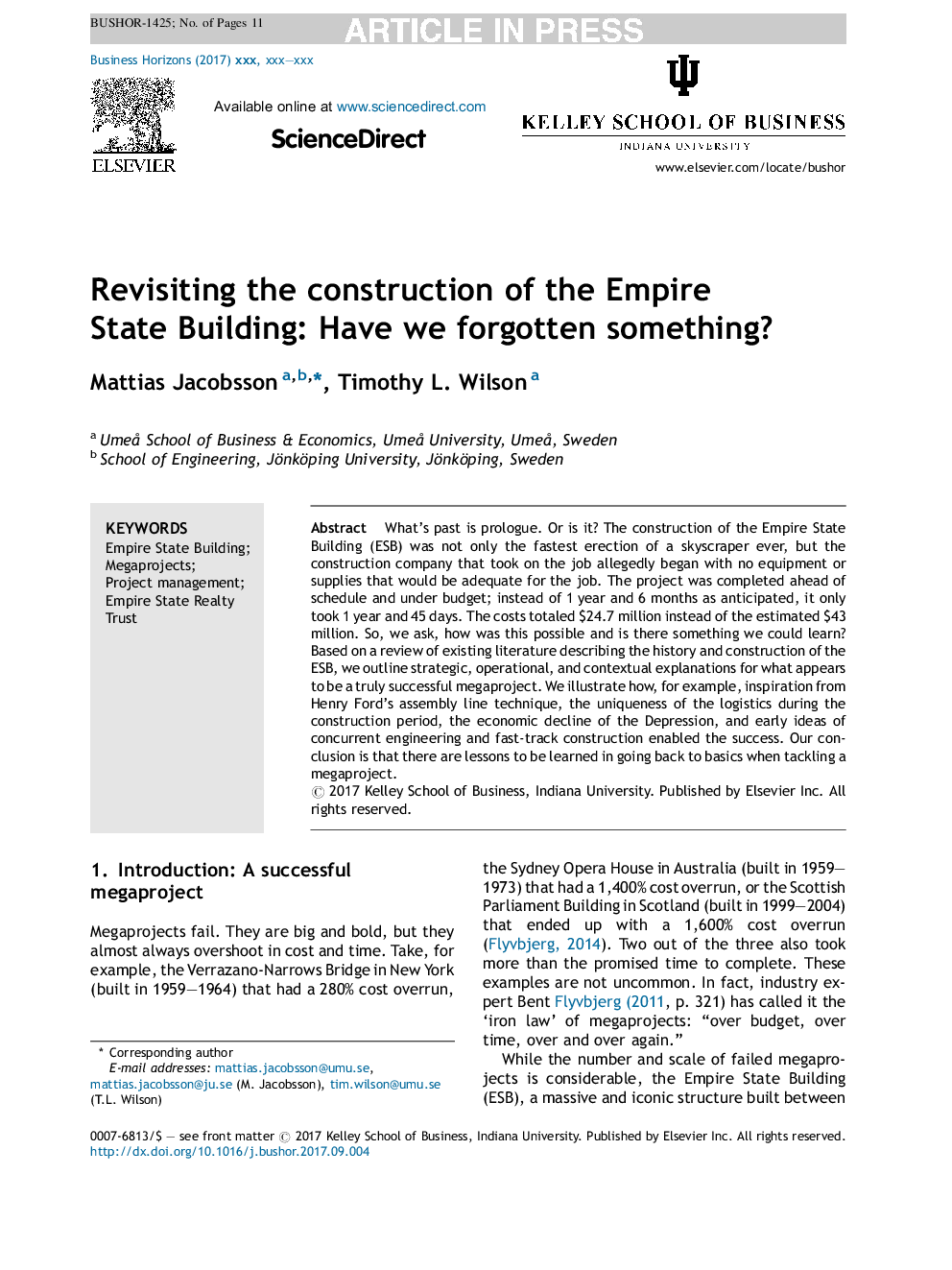| Article ID | Journal | Published Year | Pages | File Type |
|---|---|---|---|---|
| 7423277 | Business Horizons | 2018 | 11 Pages |
Abstract
What's past is prologue. Or is it? The construction of the Empire State Building (ESB) was not only the fastest erection of a skyscraper ever, but the construction company that took on the job allegedly began with no equipment or supplies that would be adequate for the job. The project was completed ahead of schedule and under budget; instead of 1Â year and 6 months as anticipated, it only took 1Â year and 45 days. The costs totaled $24.7 million instead of the estimated $43 million. So, we ask, how was this possible and is there something we could learn? Based on a review of existing literature describing the history and construction of the ESB, we outline strategic, operational, and contextual explanations for what appears to be a truly successful megaproject. We illustrate how, for example, inspiration from Henry Ford's assembly line technique, the uniqueness of the logistics during the construction period, the economic decline of the Depression, and early ideas of concurrent engineering and fast-track construction enabled the success. Our conclusion is that there are lessons to be learned in going back to basics when tackling a megaproject.
Keywords
Related Topics
Social Sciences and Humanities
Business, Management and Accounting
Business and International Management
Authors
Mattias Jacobsson, Timothy L. Wilson,
